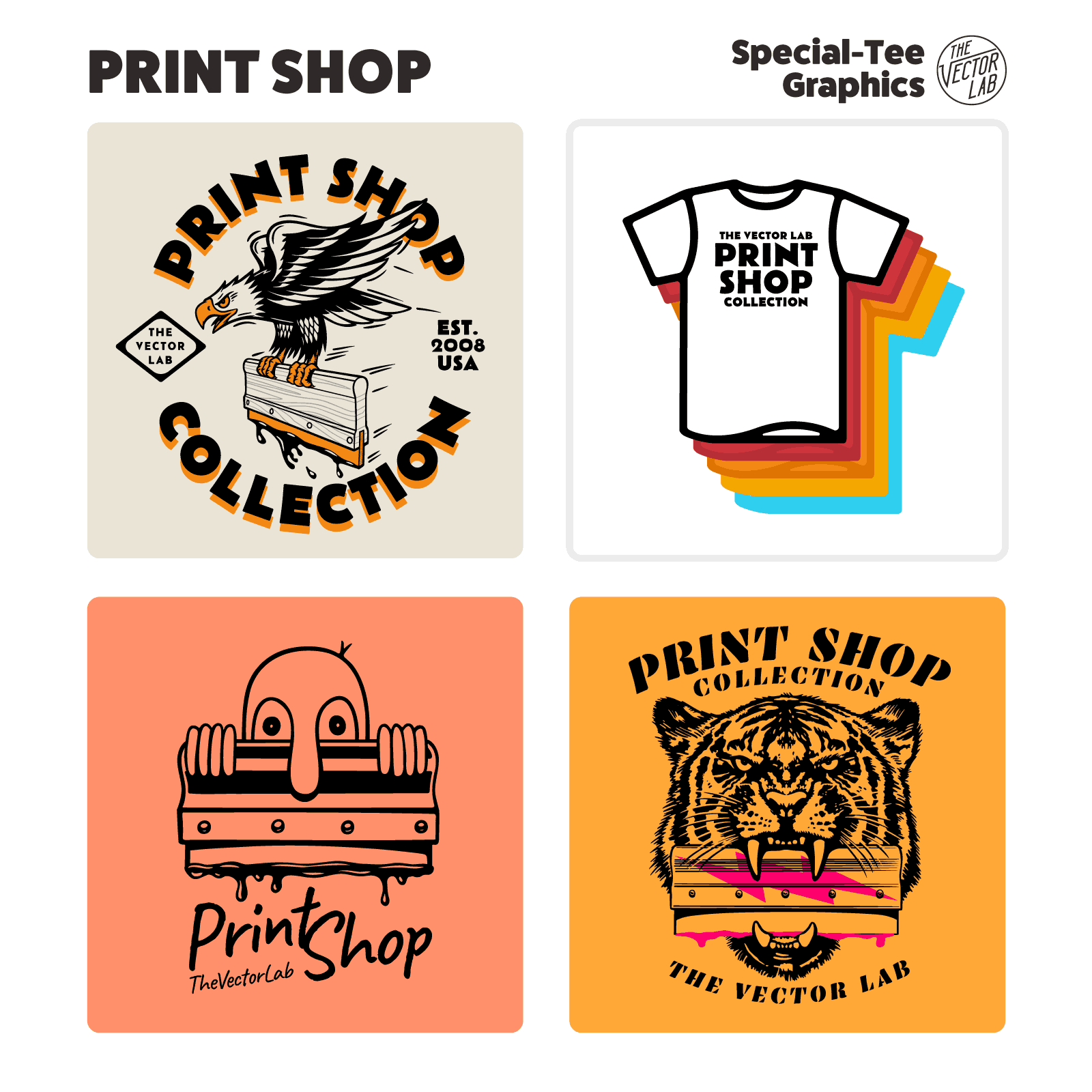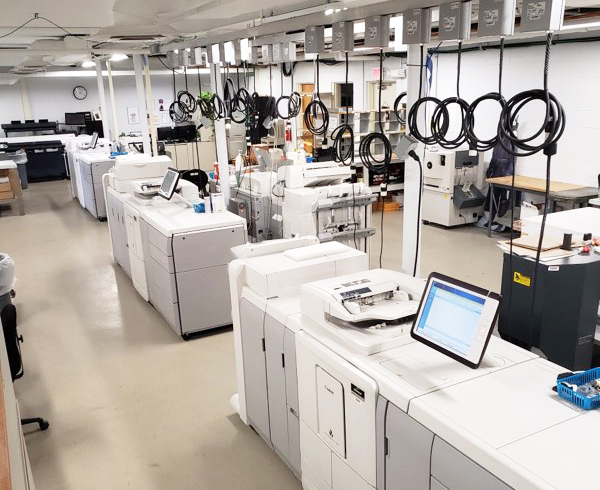What Sets a Professional Print Shop Near Me Apart from Chain Stores?
What Sets a Professional Print Shop Near Me Apart from Chain Stores?
Blog Article
The Ultimate Overview to Utilizing Printing Providers for Personalized Art Prints
Steering via the globe of customized art prints requires a clear understanding of numerous printing solutions. Artists need to take into consideration factors such as printing methods and products to attain the wanted result. Each choice, from art work preparation to shade calibration, plays a crucial function in the final product. As they explore these components, musicians can disclose the capacity for their work to connect with audiences in a meaningful method. What actions can they require to guarantee their prints stand apart?
Recognizing Various Sorts Of Printing Services
Although lots of people may forget the ins and outs of printing solutions, comprehending the various types offered is vital for any individual looking to produce custom art prints. One of the most usual types consist of electronic printing, offset printing, and screen printing. Digital printing is preferred for its quick turnaround and capability to create high-quality pictures directly from digital documents, making it excellent for little runs. On the other hand, offset printing offers premium picture top quality and is cost-effective for larger quantities, making use of plates to transfer ink onto paper. Display printing, usually utilized for textiles and marketing things, includes pushing ink with a mesh screen, permitting dynamic colors and structures. Each method has its unique benefits and limitations, making it essential for musicians and developers to assess their particular requirements, such as quantity, desired high quality, and budget, before selecting a printing solution that lines up with their creative vision.
Picking the Right Products for Your Prints
Choosing the proper products is essential for attaining top quality customized art prints. Recognizing the various kinds of paper and the significance of ink quality can considerably impact the outcome. Artists have to think about these factors to ensure their vision is precisely represented in the printed item.
Paper Kind Explained
Picking the ideal paper type is necessary for achieving the wanted aesthetic and toughness in customized art prints. Numerous options exist, each offering unique characteristics. Shiny paper improves shade vibrancy and detail, making it ideal for photography prints. On the other hand, matte paper supplies a softer surface, which is preferable for artwork that calls for subtlety and texture. Fine art paper, usually made from cotton or alpha cellulose, supplies archival high quality and appropriates for replicating detailed details in paints (Print Shop Near Me). In addition, specialty documents, such as watercolor or canvas, can include special visual impacts. Eventually, selecting the ideal paper type will significantly affect the final presentation, ensuring that the art work is both lasting and visually attractive
Ink High Quality Issues
Ink top quality plays a vital duty in the total success of custom-made art prints. Premium inks ensure vivid colors, sharp details, and longevity, which are essential for showcasing creative work. When choosing printing services, artists need to consider pigment-based inks over dye-based alternatives, as they supply better fade resistance and shade security. Furthermore, the selection of ink must enhance the picked paper kind, improving the print's visual effect. Ecological aspects, such as moisture and temperature, can likewise impact ink performance; consequently, artists ought to ask about ink formulations that resist these aspects. Ultimately, buying premium ink high quality can boost the final item, guaranteeing that the art print remains real to the artist's vision for many years to find.
Exploring Printing Techniques: Digital vs. Typical
While both conventional and digital printing methods have their unique advantages, the choice on which approach to use often rests on the details requirements of the art work. Digital printing stands out in adaptability and speed, allowing for fast turnaround times and the capability to publish on demand. This method is specifically useful for musicians who call for tiny runs or distinct items, as it removes the demand for comprehensive configuration processes.Conversely, standard printing techniques, such as lithography and screen printing, frequently generate richer colors and appearances, appealing to artists seeking an extra tactile and authentic surface. These methods can enhance the deepness and top quality of the artwork, making them ideal for bigger versions. Additionally, traditional techniques might use an unique visual that electronic printing in some cases battles to duplicate. Ultimately, the choice in between these methods must think about factors like wanted top quality, amount, and imaginative intent, leading musicians to the most appropriate alternative for their projects.

Preparing Your Artwork for Printing
Effectively preparing art work for printing requires cautious attention to detail, no matter of the chosen printing strategy. Musicians have to ensure that their data are created at the proper resolution, typically 300 DPI, to maintain sharpness and clarity. The correct shade mode, usually CMYK for print, is vital to attain the desired color precision. Artists need to additionally take into consideration the dimensions of the art work, making certain to consist of bleed locations if essential, to stop Related Site any undesirable white sides after trimming.Additionally, file formats play an important function; TIFF and PDF are frequently liked for top notch prints. Before entry, it is necessary to assess the artwork for any type of flaws or unwanted aspects. By carefully inspecting these elements, artists can enhance the possibility of their prints aligning with their creative vision, eventually causing an effective printing outcome.
The Significance of Color Calibration and Proofing
Shade calibration and proofing are vital action in the printing procedure, as they ensure that the final outcome precisely reflects the musician's vision. Proper shade calibration assurances that the colors showed on the screen suit those that will certainly be printed. This process includes adjusting the monitor setups, printer profiles, and inks to achieve a constant color representation.Additionally, proofing allows musicians to preview their job prior to the final print run. This phase allows them to detect and rectify any type of discrepancies in detail, color, or saturation, consequently minimizing expensive errors. By utilizing digital or hard-copy proofs, musicians can make educated decisions about modifications needed for optimal results.Incorporating shade calibration and proofing into the printing process not only enhances the quality of the end product but likewise fosters a reliable partnership between the musician and the printing solution, assuring fulfillment and integrity to the initial art work.
Picking the Perfect Dimension and Format for Your Prints

Advertising and marketing and Marketing Your Customized Art Prints
Marketing and offering customized art prints calls for a strong brand identification to stand apart in an open market. Effective on-line promotion methods and the tactical use social media platforms can substantially boost visibility and engagement. By integrating these aspects, artists can develop a compelling presence that attracts possible buyers.
Structure Your Brand Name Identity
Developing a solid brand identification is important for artists aiming to efficiently market and market their personalized art prints. This identification includes the musician's unique design, worths, and tale, which resonate with prospective purchasers. Musicians need to develop a natural visual visibility throughout all platforms, including logo designs, color design, and typography that mirror their imaginative vision. In addition, a clear goal declaration assists communicate the musician's function and interest. Engaging narration about the ideas behind each item can promote emotional connections with the target market. Uniformity in messaging, whether on social media or product packaging, boosts acknowledgment and count on. By learn the facts here now meticulously curating their brand name identification, musicians can differentiate themselves in an affordable market, attracting faithful clients who value their virtuosity.
Efficient Online Promo Techniques
What approaches can artists employ to efficiently promote their personalized art publishes online? Creating an expert web site showcasing the art work is important. This site should include top quality photos and detailed descriptions to involve possible purchasers. Additionally, musicians can use e-mail advertising by developing a customer listing to share updates, promos, and brand-new releases. Teaming up with blog owners and influencers in the art area can expand reach and integrity. Offering limited-time price cuts or unique pieces can likewise develop seriousness, encouraging purchases. Enhancing material for search engines with appropriate keyword phrases will improve presence. Finally, preserving a blog concerning the creative process can attract art fanatics, cultivating a deeper connection with the audience and boosting the total advertising strategy.
Making Use Of Social Network Operatings Systems
Social media site systems function as effective devices for musicians looking to market and offer their customized art prints. By leveraging systems like Instagram, Facebook, and Pinterest, musicians can display their work to a huge target market. Engaging visuals and strategic hashtags can boost exposure, attracting potential purchasers to their accounts. Regularly posting content, such as behind the curtain procedures or new styles, helps preserve audience passion and fosters a sense of area. Additionally, artists can make use of targeted marketing to get to certain demographics, enhancing the possibilities of sales. Collaborations with influencers or various other musicians can additionally intensify direct exposure. Inevitably, a well-curated social media presence not just promotes personalized art prints but likewise develops a dedicated customer base gradually.
Often Asked Concerns

How Do I Find Dependable Printing Expert?
To locate trustworthy printing provider, one need to investigate on the internet testimonials, seek suggestions from peers, contrast profiles, demand examples, and evaluate client service responsiveness. This detailed method guarantees educated decisions and acceptable outcomes.
What Is the Normal Turn-around Time for Custom-made Prints?
The regular turn-around time for custom-made prints differs by provider, yet usually ranges from a couple of days to 2 weeks. Factors affecting this consist of order size, intricacy, and the specific printing methods used.
Can I Obtain a Reimbursement if I'm Not Pleased With My Prints?
The inquiry of acquiring a refund for disappointing prints commonly relies on the details printing solution's policies. Several business supply contentment warranties, while others might have stringent return conditions, emphasizing the significance of assessing terms ahead of time.
Exist Any Hidden Prices Connected With Printing Solutions?
Several printing solutions may consist of covert costs such as configuration charges, shipping fees, or added fees for details products. It's important for customers to ask about all potential expenditures prior to completing their order.
How Can I Ensure My Prints Are Eco-friendly?
To ensure prints are eco-friendly, one need to choose eco-friendly inks, recycled paper, and sustainable printing practices. Looking into printing solutions that focus on sustainability and getting qualifications can even more guarantee very little environmental impact in the printing process. Guiding via the world of custom art prints requires a clear understanding of numerous printing services. Lots of individuals might forget the intricacies of printing solutions, comprehending the numerous kinds available is crucial for anybody looking to produce custom art prints. The most typical types consist of digital printing, offset printing, and display printing. Efficiently preparing art work for printing requires cautious attention to detail, no matter of the selected printing technique. Prints aimed at galleries might require conventional dimensions to facilitate framing, whereas one-of-a-kind formats might appeal to collectors looking for something distinctive.Lastly, the printing solution's capabilities need to be reviewed.
Report this page